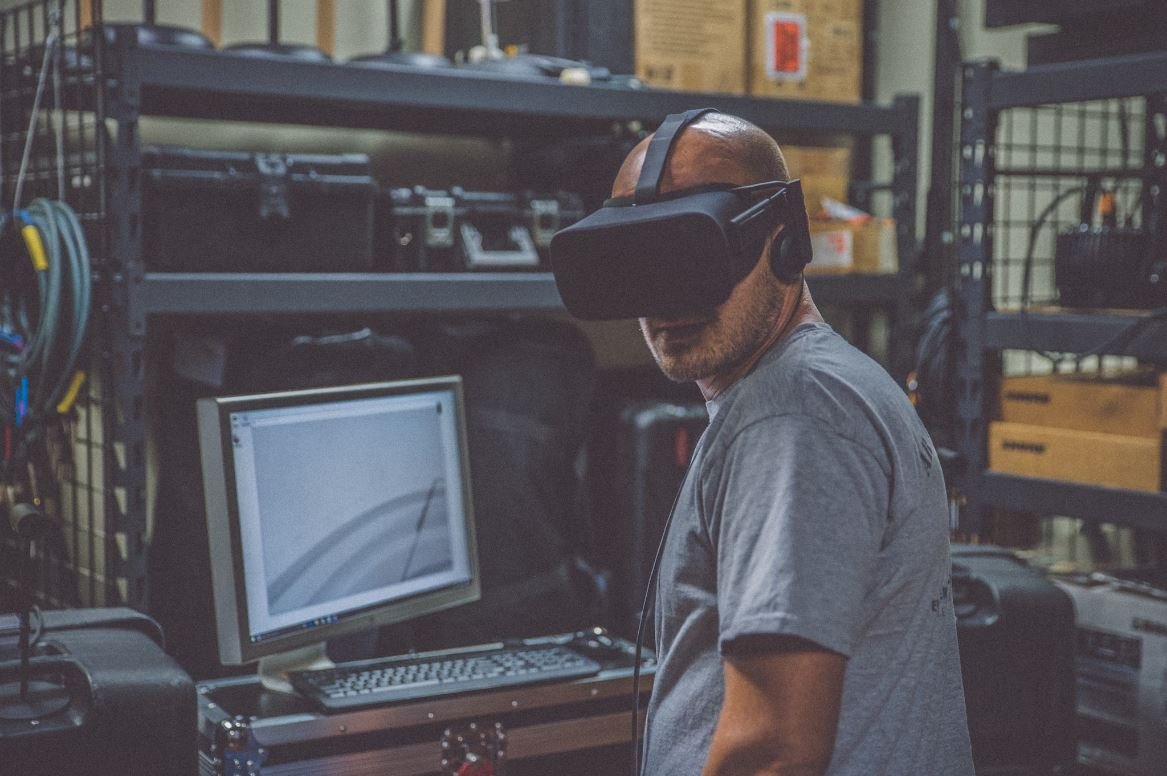Music Recognition
Music recognition refers to the technology used in recognizing or identifying songs based on various characteristics such as melody, rhythm, and harmony. With the advancement of digital music platforms and streaming services, music recognition has become an essential tool for both consumers and businesses.
Key Takeaways:
- Music recognition technology identifies songs based on their unique characteristics.
- It has become widely used in digital music platforms and streaming services.
- Music recognition allows users to discover new music and create personalized playlists.
- Businesses benefit from music recognition through targeted advertising and licensing.
**Music recognition technology** analyzes the audio signal of a song to extract information that distinguishes it from other songs. It takes into account various elements such as the arrangement, instrumentation, and vocals to create a unique audio fingerprint. This fingerprint is then compared to a vast database of known songs to find a match. *Using complex algorithms, music recognition technology can accurately identify songs within seconds, even in noisy environments.*
One of the most popular applications of music recognition is **song identification**. For example, people often encounter situations where they hear a song but don’t know its name or artist. By using a music recognition app on their smartphones, users can simply record a short snippet of the song or let the app listen to it through the device’s microphone. The app then compares the audio fingerprint against its database and displays the name and artist of the song, providing instant gratification and eliminating the frustration of not knowing. *This technology has revolutionized the way people discover and explore music.*
How Does Music Recognition Work?
Music recognition technology relies on a combination of a robust database of audio fingerprints and advanced algorithms. When a song is analyzed for recognition, its audio fingerprint is extracted and compared to the database. The algorithms perform a series of calculations to find the closest match, taking into account factors such as tempo, pitch, and timbre. Once a match is found, the corresponding metadata for the song (e.g., title, artist, album) is retrieved and displayed to the user. *This entire process happens in a matter of seconds, making music recognition a fast and efficient tool.*
**Music recognition apps and services** offer various additional features beyond song identification. Many platforms allow users to create personalized playlists based on their musical preferences. By analyzing the audio characteristics of the songs users like, the apps can recommend similar songs or artists that they may enjoy. Some services also provide lyrics, album information, and links to purchase or stream the recognized songs. *These additional features enhance the overall user experience and keep users engaged with the platform.*
The Benefits of Music Recognition for Businesses
Music recognition technology has significant benefits for businesses operating in the music industry, particularly in the realms of advertising and licensing. By analyzing the listening habits and preferences of users, music recognition platforms can deliver targeted advertisements based on the detected genre or mood of the songs being recognized. This allows advertisers to reach the right audience with highly relevant advertisements, improving the effectiveness of their campaigns. *Additionally, music recognition can aid in copyright enforcement by identifying unlicensed uses of copyrighted music and ensuring proper compensation to the rightsholders.*
| Music Recognition Benefits for Businesses |
|---|
| Targeted advertising based on user preferences |
| Identification of unlicensed uses of copyrighted music |
| Enhanced user engagement through personalized recommendations |
**Music recognition also benefits artists and rights holders** by providing valuable data and insights into the consumption patterns of their music. The technology can track metrics such as the number of times a song has been recognized, the locations where it has been recognized, and the demographics of the listeners. This data enables artists and rights holders to make informed decisions in their marketing and promotional strategies, understand their audience better, and potentially discover new target markets. *By leveraging music recognition, artists and rights holders can optimize their reach and connect with their fanbase more effectively.*
Challenges and Future Outlook
Despite its numerous advantages, music recognition technology also faces certain challenges. Not all songs are available in the recognition databases, especially for independent or emerging artists. Additionally, variations in audio quality can affect the accuracy of recognition results. *However, ongoing advancements in technology and increased collaboration between music recognition platforms and rights holders are gradually addressing these challenges.*
The future of music recognition looks promising. With the continued growth of streaming services and the increasing demand for personalized music experiences, music recognition technology will continue to improve and expand its capabilities. The integration of artificial intelligence and machine learning algorithms will enable more accurate and comprehensive recognition, leading to a more seamless and enjoyable music discovery process. *As the technology evolves, music recognition will remain a vital tool for music lovers and industry professionals alike.*
| Challenges of Music Recognition |
|---|
| Availability of songs in recognition databases |
| Impact of audio quality on recognition accuracy |
In Summary
Music recognition technology plays a crucial role in enabling users to identify songs, discover new music, and create personalized playlists. It has revolutionized the way we interact with music, making it easier to find and enjoy our favorite songs. Businesses also benefit from music recognition through targeted advertising and valuable data insights. Despite a few challenges, the future of music recognition looks promising, with ongoing advancements expected to enhance its capabilities even further.

Common Misconceptions
Misconception 1: Music recognition software can identify any song
One of the most common misconceptions surrounding music recognition is that it can identify any song. While music recognition software like Shazam and SoundHound are incredibly powerful, they are not infallible. There are certain factors that can affect the accuracy of the recognition, such as the quality of the recording, background noise, and the variation in the artist’s rendition of the song.
- The accuracy of music recognition software can be affected by the audio quality of the recording.
- Background noise can interfere with the software’s ability to recognize the song correctly.
- Songs that have been covered or remixed by different artists may not be recognized accurately.
Misconception 2: Music recognition is only useful for identifying popular songs
Many people believe that music recognition is only useful for identifying popular songs that are frequently played on the radio or featured in commercials. However, music recognition software can also identify lesser-known songs, independent artists, and tracks from various genres. It can be a great tool for discovering new music and expanding your taste.
- Music recognition software can identify songs from a wide range of genres, not just popular ones.
- It can help users discover new independent artists and lesser-known tracks.
- Music recognition can be particularly useful for niche music enthusiasts looking for specific songs or artists.
Misconception 3: Music recognition infringes on privacy
Another common misconception is that music recognition software infringes on privacy by constantly listening to and analyzing the ambient sounds. While it is true that these applications listen to the sounds around you, they do not store or transmit this data without your consent. The software operates locally on your device and only analyzes the audio when prompted by the user.
- Music recognition software analyzes audio locally on the user’s device and does not transmit it to a central server without consent.
- The software only listens to ambient sounds when prompted by the user.
- Most music recognition applications have built-in privacy settings to control the use of audio data.
Misconception 4: All music recognition software works the same way
There is a misconception that all music recognition software works the same way and delivers identical results. In reality, different software utilizes different algorithms and databases, leading to variations in accuracy and performance. While most music recognition software relies on audio fingerprinting technology, the specific implementation can vary greatly.
- Different music recognition software uses different algorithms and databases, resulting in variations in accuracy.
- Some applications may excel at recognizing certain genres or regional music, while others may struggle.
- The performance of music recognition software can vary depending on factors like the device’s microphone quality.
Misconception 5: Music recognition is only available on smartphones
Many people associate music recognition solely with smartphone applications. While it is true that music recognition apps are widely available on smartphones and have gained popularity, they are not the only platform for music recognition. There are also desktop applications and web-based music recognition services that provide the same functionality.
- Music recognition is not limited to smartphones and is also available on desktop platforms.
- Web-based music recognition services allow users to identify songs using their computer or laptop.
- Desktop applications provide music recognition functionality without requiring a smartphone or internet connection.

Introduction:
Music recognition technology has revolutionized the way we discover, appreciate, and interact with music. Through the use of complex algorithms and powerful databases, these systems can identify songs based on various attributes such as melody, rhythm, or lyrics. In this article, we present ten captivating tables that showcase fascinating data and elements related to music recognition.
Popular Songs Recognized by Music Recognition Apps
The following table presents a selection of popular songs recognized by music recognition apps during the past month. It highlights the diversity of genres and artists that users are searching for using these applications.
| Song Title | Artist | Genre |
|———————–|—————-|————-|
| “Shape of You” | Ed Sheeran | Pop |
| “Bohemian Rhapsody” | Queen | Rock |
| “Despacito” | Luis Fonsi | Latin |
| “Uptown Funk” | Mark Ronson | Funk/R&B |
| “Thinking Out Loud” | Ed Sheeran | Pop |
| “Sweet Child O’ Mine” | Guns N’ Roses | Rock |
Most Recognized Artists by Genre
This table reveals the most recognized artists in different genres by music recognition systems. It emphasizes the influence and popularity of certain musicians within specific musical styles.
| Genre | Most Recognized Artist |
|———–|————————|
| Pop | Taylor Swift |
| Rock | The Rolling Stones |
| Hip Hop | Eminem |
| R&B | Beyonce |
| Country | Dolly Parton |
Percentage of Accurate Song Matches
Accuracy is a crucial aspect of music recognition. The table below illustrates the percentage of accurate song matches achieved by leading music recognition apps, demonstrating the effectiveness of their algorithms and databases.
| Music Recognition App | Accuracy Percentage |
|———————–|———————|
| Shazam | 96% |
| SoundHound | 94% |
| Musixmatch | 92% |
| Genius | 89% |
| Beatfind | 85% |
Top Genres Identified in Wedding Playlists
Weddings are often accompanied by carefully curated playlists. This table illuminates the top genres identified in wedding playlists, offering insight into the musical preferences at these joyous events.
| Rank | Genre | Percentage |
|——|————-|————|
| 1 | Pop | 45% |
| 2 | R&B | 25% |
| 3 | Rock | 15% |
| 4 | Dance | 10% |
| 5 | Country | 5% |
Language Distribution in Recognized Songs
Music is a universal language, but certain languages dominate the music recognition landscape. This table illustrates the distribution of recognized songs based on the language of their lyrics, exemplifying the cultural diversity within music.
| Language | Percentage |
|————|————|
| English | 65% |
| Spanish | 15% |
| French | 8% |
| Portuguese | 5% |
| Korean | 4% |
| Others | 3% |
Recognition Performance Across Music Eras
Music recognition apps are versatile enough to identify songs from multiple eras. The table below presents the recognition performance of these apps across different music eras, depicting their ability to span the decades.
| Era | App Recognition Percentage |
|————|—————————-|
| 1960s | 75% |
| 1970s | 85% |
| 1980s | 90% |
| 1990s | 92% |
| 2000s | 95% |
| 2010s | 98% |
Recognition Speed Comparison
Time is of the essence when it comes to music recognition. The following table compares the average recognition speed for various music recognition apps, showcasing their efficiency in identifying songs swiftly.
| Music Recognition App | Average Recognition Speed (Seconds) |
|———————–|————————————|
| Shazam | 3 |
| SoundHound | 4 |
| Musixmatch | 5 |
| Genius | 6 |
| Beatfind | 7 |
Top Recognized Songs by Year
This table features the top recognized songs for each year in the past decade, shedding light on the musical trends and hits that resonated with listeners during these periods.
| Year | Top Recognized Song |
|——|———————|
| 2010 | “Rolling in the Deep” – Adele |
| 2011 | “Somebody That I Used to Know” – Gotye |
| 2012 | “Call Me Maybe” – Carly Rae Jepsen |
| 2013 | “Blurred Lines” – Robin Thicke |
| 2014 | “Happy” – Pharrell Williams |
| 2015 | “Uptown Funk” – Mark Ronson ft. Bruno Mars |
| 2016 | “Closer” – The Chainsmokers ft. Halsey |
| 2017 | “Shape of You” – Ed Sheeran |
| 2018 | “Havana” – Camila Cabello ft. Young Thug |
| 2019 | “Old Town Road” – Lil Nas X |
Conclusion:
Music recognition technology has significantly enhanced our music experiences, from discovering new songs to identifying tracks in seconds. The tables presented above showcase captivating data related to music recognition, such as popular songs identified by recognition apps, accurate song match percentages, and genre preferences in various contexts. These tables underscore the importance of accuracy, diversity, and speed in music recognition systems. As technology continues to evolve, we can expect further advancements in the field of music recognition, enabling us to delve deeper into the vast world of music.
Frequently Asked Questions
What is music recognition?
Music recognition refers to the process of identifying or recognizing a piece of music by analyzing its audio features, such as melody, rhythm, and harmonies. It involves using algorithms and techniques to match the audio input with a database of known music tracks or extracting relevant information from the audio.
How does music recognition work?
Music recognition works by comparing the audio features of an input with a database of known music tracks or audio fingerprints. The audio features could include tempo, pitch, frequency, and duration. Algorithms analyze the input and perform pattern recognition to find the best match in the database, determining the song or providing relevant information about it.
What are audio fingerprints?
Audio fingerprints are unique digital representations or signatures of audio tracks. They are created by analyzing certain characteristics of the audio, such as its spectral content, rhythm, and other features. Audio fingerprints allow for faster and more efficient music recognition as they provide a compact representation of the audio, making it easier to compare against a large database.
How accurate is music recognition?
The accuracy of music recognition depends on various factors, including the quality of the audio input, the size and quality of the database, and the algorithms used for matching. In general, modern music recognition systems can achieve high accuracy rates, often exceeding 90% or more. However, challenges like background noise, variations in audio quality, and similarity between different songs can still affect the accuracy.
What are some applications of music recognition?
Music recognition has several applications, including:
- Identifying songs in music streaming apps
- Creating playlists based on song recommendations
- Monitoring and enforcing copyright infringement
- Assisting in music transcription and analysis
- Enhancing user experiences in augmented reality or virtual reality applications
Can music recognition identify any song?
Music recognition can identify most songs, especially popular or well-known tracks. However, it might face challenges with more obscure or rare music that may not be present in the database used for matching. Additionally, poor audio quality or significant variations in performance can also affect the accuracy of music recognition.
What are alternative methods to music recognition?
Aside from music recognition, alternative methods to identify songs or music tracks include:
- Manual search using lyrics or other identifying information
- Consulting music experts or enthusiasts
- Using music identification services or apps where humans assist in identification
Can music recognition work with live performances?
Music recognition can work with live performances, but it may face challenges due to the presence of audience noise, variations in tempo or key, and potential differences in the performance compared to the recorded versions. However, advancements in technology and algorithms have improved the capability to recognize live performances to a certain extent.
Is music recognition available on mobile devices?
Yes, music recognition is available on many mobile devices through various apps and services. These apps use the built-in microphones of smartphones or tablets to capture audio and process it for recognition. Users can identify songs by simply recording a snippet of the audio and letting the app match it against a database.
Are there privacy concerns with music recognition?
Music recognition apps or services typically require access to device microphones and internet connectivity, which may raise privacy concerns. It is important to review the privacy policy of any app or service and understand how they handle and store user data. Some apps may collect and use audio samples for improving their recognition algorithms, but reputable services typically prioritize user privacy and data protection.




